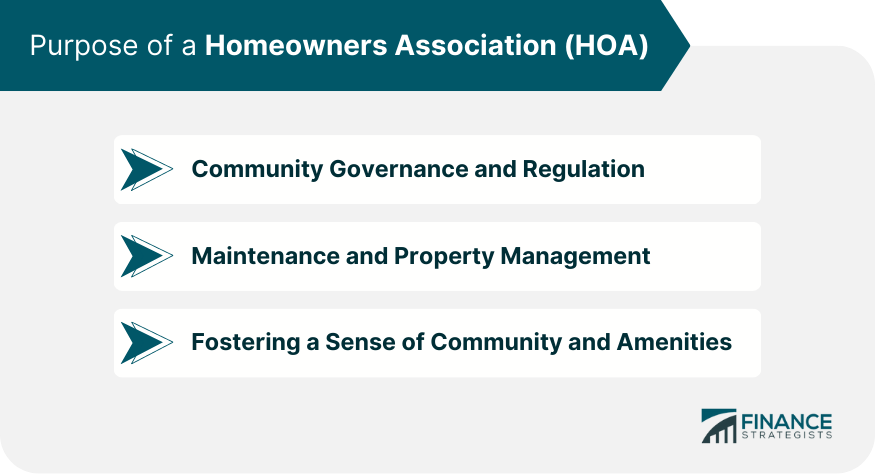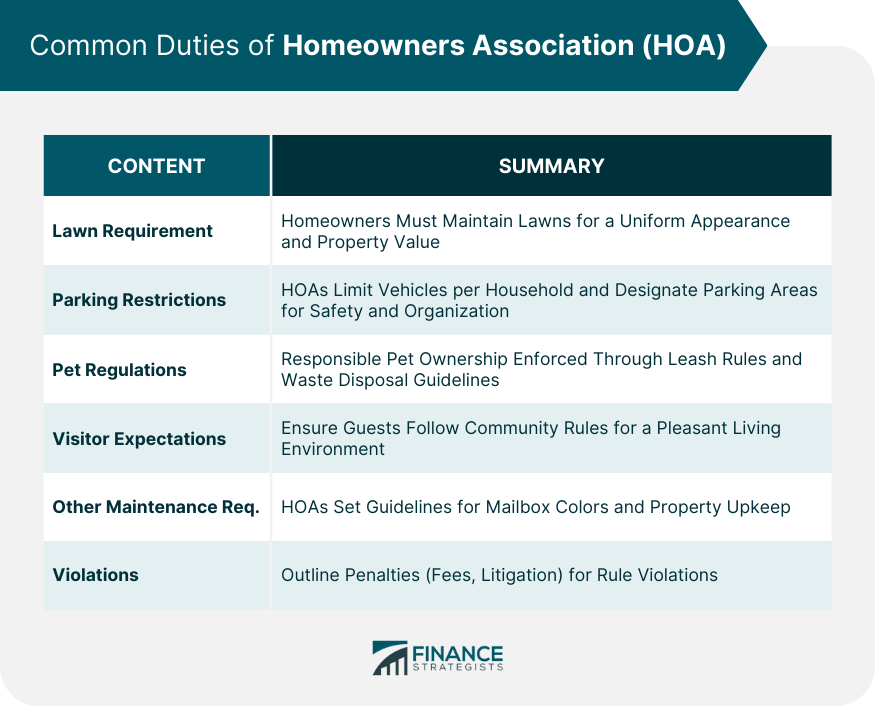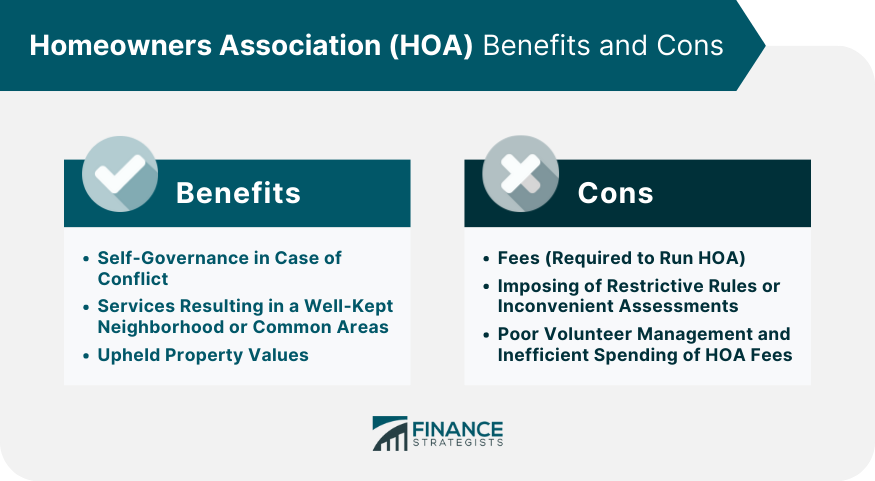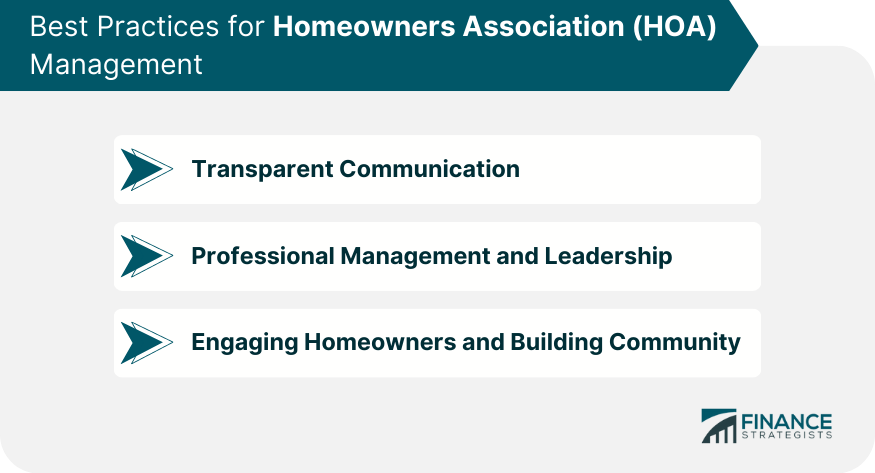A homeowners association, or HOA, is an organization in a neighborhood, condominium, or other jurisdiction that creates and enforces rules for the residents and their properties. Certain jurisdictions may require homeowners to become a member of the HOA and require dues, called HOA fees, typically collected monthly or annually. The HOA uses the funds to benefit members of the HOA, such as facility upkeep of common areas. HOAs have bylaws, and residents must comply with them. They also establish the regulations, known as Covenants, Conditions, and Restrictions (CC&Rs), that detail the rules of the community. These can include regulations related to architectural standards, landscaping, noise levels, parking, and more. The HOA's board of directors, typically composed of elected homeowners from the community, enforces the association's rules and regulations. This helps maintain a level of uniformity and aesthetic continuity within the neighborhood, thus preserving the area's visual appeal and property values. In addition to enforcing rules, HOAs often have the power to impose fines or other penalties for violations. This regulatory role helps minimize conflicts and ensure a peaceful living environment for all residents. Some HOAs may even handle dispute resolution among neighbors, providing a structured process to address issues without resorting to legal action. These can include shared spaces such as parks, clubhouses, swimming pools, and even streets and sidewalks. HOA fees collected from homeowners fund the upkeep of these areas, ensuring they remain clean, safe, and in good repair. In addition to maintaining common areas, some HOAs may also be responsible for certain aspects of property maintenance within individual homes. This is especially common in condominium communities, where the HOA might handle external building repairs, landscaping, and similar tasks. By centralizing these tasks, HOAs can help ensure consistent quality and relieve individual homeowners of these responsibilities. Beyond regulations and maintenance, HOAs often work to foster a sense of community among residents. They may organize social events, holiday celebrations, and community-wide initiatives. These activities can promote neighborly interaction, enhancing the communal spirit and improving residents' overall quality of life. HOAs often also oversee the operation and use of community amenities. These can range from swimming pools and fitness centers to golf courses and tennis courts, depending on the community. By managing these amenities, HOAs help ensure they are well-maintained and accessible to all residents, adding to the attractiveness of the community as a whole. An HOA consists of a board of directors who are elected to enforce their established rules and regulations. The "Declaration of Covenants, Conditions, and Restrictions"(CC&Rs) outlines the stipulations homeowners are expected to uphold. Examples in CC&Rs include: Homeowners within the HOA are required to maintain their lawns regularly to preserve a uniform and attractive appearance throughout the community. This involves regular mowing, weeding, and general upkeep to ensure that the neighborhood remains visually appealing. HOAs enforce these lawn requirements as community aesthetics and property values significantly depend on consistent lawn care. To prevent congestion and maintain safety, HOAs typically impose parking restrictions within the community. These restrictions may include limiting the number of vehicles allowed per household or designating specific areas for parking. This is designed to promote responsible pet ownership and maintain harmony within the community. These regulations may include leash requirements, waste disposal guidelines, and noise control measures to minimize disturbances caused by pets. By setting these rules, HOAs aim to create a pet-friendly environment while ensuring that the presence of pets does not negatively impact other residents. Homeowners are typically responsible for the conduct of their guests and must ensure they adhere to community rules and standards. HOAs often communicate visitor expectations to homeowners to maintain a pleasant living environment. HOAs may establish specific guidelines for other aspects of property maintenance. This may include maintenance requirements such as color of mailbox or required home upkeep. The document of CC&Rs also outlines the penalties for violations of the rules, which may include fees, forced compliance, or litigation. The pros of an HOA include: Self-governance in case of conflict Services resulting in a well-kept neighborhood or common areas Upheld property values The cons of an HOA include: Fees (required to run HOA) Imposing of restrictive rules or inconvenient assessments Poor volunteer management and inefficient spending of HOA fees This involves keeping homeowners informed about the HOA's activities, financial status, rule changes, and other important matters. Transparency builds trust between the HOA board and the community members and ensures homeowners are aware of their responsibilities and the benefits of their HOA membership. Regular HOA meetings provide a platform for this communication. In these meetings, homeowners can voice their concerns, contribute ideas, and participate in decision-making. They also present an opportunity for the board to explain its decisions and actions, fostering an environment of openness and mutual respect. Board members should have a clear understanding of the HOA's bylaws and CC&Rs, as well as local and state laws governing HOAs. They should also demonstrate a commitment to the community's welfare and act in the best interests of all homeowners. Many HOAs choose to hire professional management companies to handle day-to-day operations. These companies have expertise in financial management, property maintenance, rule enforcement, and other critical aspects of HOA management. While this does incur a cost, it can often result in more efficient management and improved community satisfaction. Encouraging homeowners to take an active role in the HOA can lead to a stronger sense of ownership and satisfaction among residents. This could be through volunteering for committees, participating in community events, or attending HOA meetings. Building a sense of community is also a critical aspect of HOA management. This might involve organizing social events, creating shared spaces for interaction, or facilitating community initiatives. A strong community not only enhances residents' quality of life but can also contribute to maintaining or increasing property values. A Homeowners Association is an organization that creates and enforces rules for residents and their properties within a neighborhood or condominium community. HOAs play a crucial role in community governance and regulation, preserving the area's visual appeal and property values by enforcing rules through elected boards of directors. They also handle maintenance and property management, ensuring shared spaces are well-kept and relieving homeowners of certain responsibilities. In addition to the regulations outlined in the "Declaration of Covenants, Conditions, and Restrictions" (CC&Rs), HOAs set guidelines for lawn maintenance, parking restrictions, pet ownership, and visitor behavior. Violations of these rules may result in penalties or fees. While HOAs offer benefits like self-governance and maintained common areas, they also face criticism for imposing fees and restrictive rules. Best practices for HOA management include transparent communication with homeowners, hiring professional management when needed, and encouraging homeowner engagement to build a strong community. What Is a Homeowners Association (HOA)?
Purpose of a Homeowners Association (HOA)
Community Governance and Regulation
Maintenance and Property Management
Fostering a Sense of Community and Amenities

What Does an HOA Do?
Lawn Requirement
Parking Restrictions
Pet Regulations
Visitor Expectations
Other Maintenance Requirements
Violations

HOA Benefits
HOA Cons

Best Practices for HOA Management
Transparent Communication
Professional Management and Leadership
Engaging Homeowners and Building Community

Conclusion
Homeowners Association (HOA) FAQs
HOA is an acronym for a Homeowners Association.
Homeowners association fees are monthly payments made by a homeowner to their neighborhood homeowner’s association (HOA).
HOA fees are collected and then put to use for the purpose of maintaining or expanding shared common areas within the neighborhood or complex.
An HOA consists of a board of directors who are elected to enforce their established rules and regulations.
The cons of an HOA include fees (required to run HOA), imposing of restrictive rules or inconvenient assessments, poor volunteer management, and inefficient spending of HOA fees.
True Tamplin is a published author, public speaker, CEO of UpDigital, and founder of Finance Strategists.
True is a Certified Educator in Personal Finance (CEPF®), author of The Handy Financial Ratios Guide, a member of the Society for Advancing Business Editing and Writing, contributes to his financial education site, Finance Strategists, and has spoken to various financial communities such as the CFA Institute, as well as university students like his Alma mater, Biola University, where he received a bachelor of science in business and data analytics.
To learn more about True, visit his personal website or view his author profiles on Amazon, Nasdaq and Forbes.















